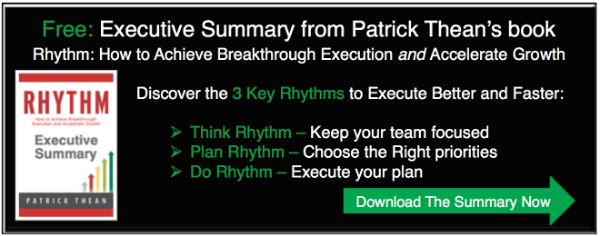Setting Sail…
It was a less-than-energetic Strategic Thinking Session (Annual Planning Session) between the executive team members. The subjects of my prior blog (The Balance of Strategic Thinking, Part II) were frustrated and confused--except for the head of acquisitions. He was, if you remember, well ahead of his metrics for the prior year. But his success was wreaking havoc on everyone else. 
What I admire about this team, though, is that they finally entered into an honest discussion around their frustrations. It was a tense discussion, but very civil. There was, however, this looming cloud of confusion around how to balance acquisitions with what their organization could handle. They sincerely wanted "this" and they wanted “that"- all good things. But they were struggling to understand why they were stuck.
So I asked the team: "Do you want to be known as a truly great company, or do you want to be known for making a lot of acquisitions?"
I asked this because there's a huge difference between the two. Their answer: Absolute silence. Everyone started looking at each other, eyeballs flashing from one person to the next looking for what they should say. After a few awkward moments of desperate stares in silence, the CEO sheepishly said, "Well....yeah...we want to be great," to which everyone else began nodding their heads in agreement. Then, why do their strategies evolve so much around such a high number of acquisitions that in turn wreak havoc on their current systems and processes? Why aren't they prepared for the success they say they want to achieve? That's not where greatness resides. Their ship was sailing in very rough waters, and they weren't celebrating anything but exhaustion.
At the time, they weren’t using the Rhythm Dashboard to track their success metrics. As a result, they weren’t prompted to ask a series of questions. Instead, everything was getting lost in their sea of metrics. Without focused attention on what’s going well and what’s not going well (relative to their success criteria), exhaustion and confusion would continue to reign.
The next time you meet with your core executive team, take the time to talk about things that can easily get lost in the whirlwind of things to do:
1. What do we want to be known for?
2. What is, definitively, our strategic imperative? What are our Winning Moves?
3. As a result of our identified Winning Moves, what systems and processes do we need to streamline so we set ourselves up for success? (Prioritize these because you can't do them all at once.)
4. How can we utilize a tool such as the Rhythm™ Dashboard to keep us focused and to keep us asking the right questions?
From this vantage point, you can then set sail in the direction of your intent.
Photo Credit: iStock by Getty Images



 LinkedIn
LinkedIn
 Facebook
Facebook
